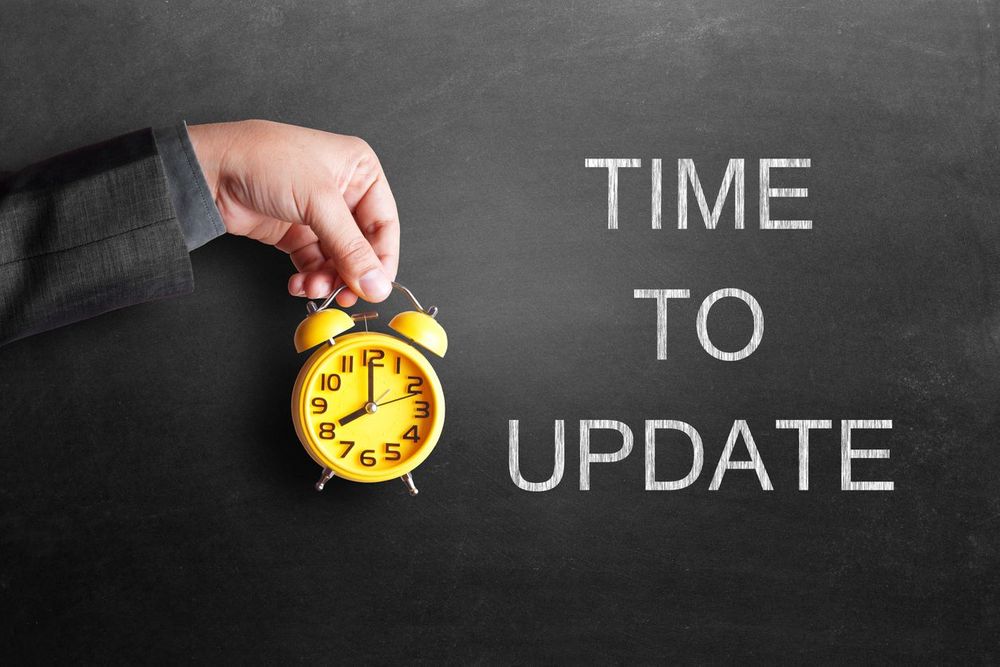
If you're in your 40's or 50's, you probably have a few years in the workplace under your belt. And while your skills and career advanced, your resume may not have moved forward with the times. It's essential to update your resume for the 21st century to impress your prospective employer.
Does it really matter if you update your resume to make it more modern? The sad fact is that your resume could be what keeps you from getting an interview or a job offer. When it comes to finding work, older individuals have the cards stacked against them. Age discrimination exists, and there are many stereotypes about older job applicants.
To overcome those stereotypes, you need to prove you can have the technical knowledge of someone born in the computer age of the 90's. And while there are several ways to do this, one of the best ways is to make your resume more current.
Follow these tips to give your resume a facelift:
When an employer looks at your resume, they want to learn about your value as an employee. The objective section of the resume only tells an employer what you want, so people are phasing out the section. At the very least, they're not starting out with it as the first part of their document.
Rather than kick things off with your objectives, start off with your relevant skills and a summary of your career. Doing so grabs the employer's attention and makes them more likely to continue reading.
You don't need to include your street address on your resume. Because identity theft is so common, you're better off not including too many personal details on your resume. Including a long list of personal details shows you have no concern about identity theft, which confirms suspicions that you're not tech savvy.
That said, you should specify your region. You can just include your city, state, and zip code. If an employer wants to know more, they can always ask you.
Do you remember when everyone who lived in an area had a local number? Back then, it was more common to enclose the area code in parentheses. Today, it's more appropriate to list the full ten digits. Separate the numbers with hyphens or periods, like 444.444.4444.
Make sure you use your personal cell phone for your resume and not your work phone. For one, it's a more common practice. Secondly, it means you won't miss an important call about an interview or job offer.
Your LinkedIn is a reflection of you and your ability to adapt to changing times. If you don't already have a LinkedIn, it's time to set one up. Even if you do have an account, you might need to make a change to your URL.
The default setting of a URL on LinkedIn is to end with seemingly random numbers and letters. To seem more professional and knowledgeable about technology, edit your URL to end in your full name. You might have some competition, so consider using your middle initial or hyphens to make your URL unique.
Whatever you do, keep things professional. Your LinkedIn isn't about your hobbies or your family. Let your URL show an employer that you mean business.
Emailing potential employers from hotmail and other outdated email providers could be a sign of your age. If you don't have a Gmail account, create one for professional purposes. Resist the temptation to get creative with the email address, and keep your email as simple as your name or name and profession.
To make things easy, try to make your email and LinkedIn consistent. Doing so makes it easier for employers to look you up and shows your attention to detail. If you make your online presence a brand, you will impress hiring managers and future employers.
Eventually, you will need to provide an interested employer with a list of references. But, unless they specifically ask for a list ahead of time, an employer won't need them with your resume. It's just something that gets in their way.
Don't include your references or a comment saying that your references are available on request. Instead, provide the list when the hiring manager asks for it. However, make sure you have the list of references ready long before your interview. It's a detail you should figure out early on in the job hunt. When you go on an interview, bring the list with you.
Although Times New Roman was the font of choice years ago, it's no longer widely used. Switch out your font to Calibri or any of the serif fonts. Arial is easy to read but common, and other fonts are just too hard to read.
The font on your resume can help or hurt you. It's a detail many job applicants ignore, so don't make the same mistake.
If you want your age to remain a secret, don't include the dates on the education portion of your resume. Include your degree, institution, major, and city and state.
Of course, you do need to include dates on your employment history. Fortunately, you don't need to go back too far in time. Unless you haven't worked in years, limit your work history to about 15 years prior. Typically, jobs from decades ago aren't as relevant and don't add much value to your resume.
These days, you only need one space after a period. People who use two spaces show their age and date their resume. Although it's a hard habit to break, Make sure you only use one space after a period.
Before you get started, see what other people submit for their resumes. You can check LinkedIn and other professional sites for examples of resumes in your industry.
Lorem Ipsum is simply dummy text of the printing and typesetting industry. Lorem Ipsum has been.
